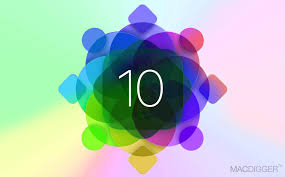iOS 10 - no more unwanted native apps!

With the iOS 10 release date just around the corner, we take a look at one of the new long awaited functionalities that will finally enable users to delete unwanted native apps from the home screen.
In every iOS release thus far, users have been unable to delete or otherwise remove unwanted native apps and instead had to resort to tricks and deception like placing all unnecessary items into a folder. With iOS 10, however, this is bound to change. Shortly after its annual WWDC conference, Apple announced that native apps could be removed from the home screen. Though the world immediately rejoiced, Apple soon clarified an important part of the process, namely the fact that apps would not actually be removed as their data would still remain on the phone.
What’s even more interesting about this is that while app icons will be removed from the home screen while the app will remain on the phone in some form, users will not be able to restore it outright. Instead, anyone who wishes to reinstate a native app will have to visit the App Store to do so as Apple has added all of the default apps in the marketplace. To be more precise, attempting to remove the app will delete the home screen icon, user data, and any associated links. When a user reinstalls it from the App Store, everything will be restored once more. In fact, attempting to “download” the app from the Store might simply prompt its activation on the phone.
On one hand, this shouldn’t be a big deal for people who wish to uninstall the apps simply to save space. Even when you combine all of the native apps together, they take up a bit less than 150MB. Though owners of iPhone devices with 16GB of storage may wish to save up as much space as they possibly can, the native apps do not really make a dent there. Furthermore, user data would most likely take up the majority of space that a native app usually occupies so removing it will free up as much space as possible.
On the other hand, the current iOS 10 release has an incredibly insufficient ways of handling things like associated links once a native app has been removed, essentially forcing users to keep those apps on their phones. For instance, take a look at this tweet from Custora Product Developer Martin Gordon.
Because the Mail app has been removed, iOS 10 does not take into account third-party email clients on the user’s device. Of course, this may simply be due to the fact that the OS is still in a beta phase. Since removing default apps is a big change for iOS, unwanted glitches are likely to occur during the testing process. If issues like this are amended then the fact that native apps cannot really be removed should not bother most people, except those with an innate hatred towards Apple’s offerings. The vast majority of users simply wanted a way to remove these apps from the home screen without having to create a folder specifically for that purpose. Since their wish of removing visual clutter has now been granted, I suspect that most will be content with the changes.



